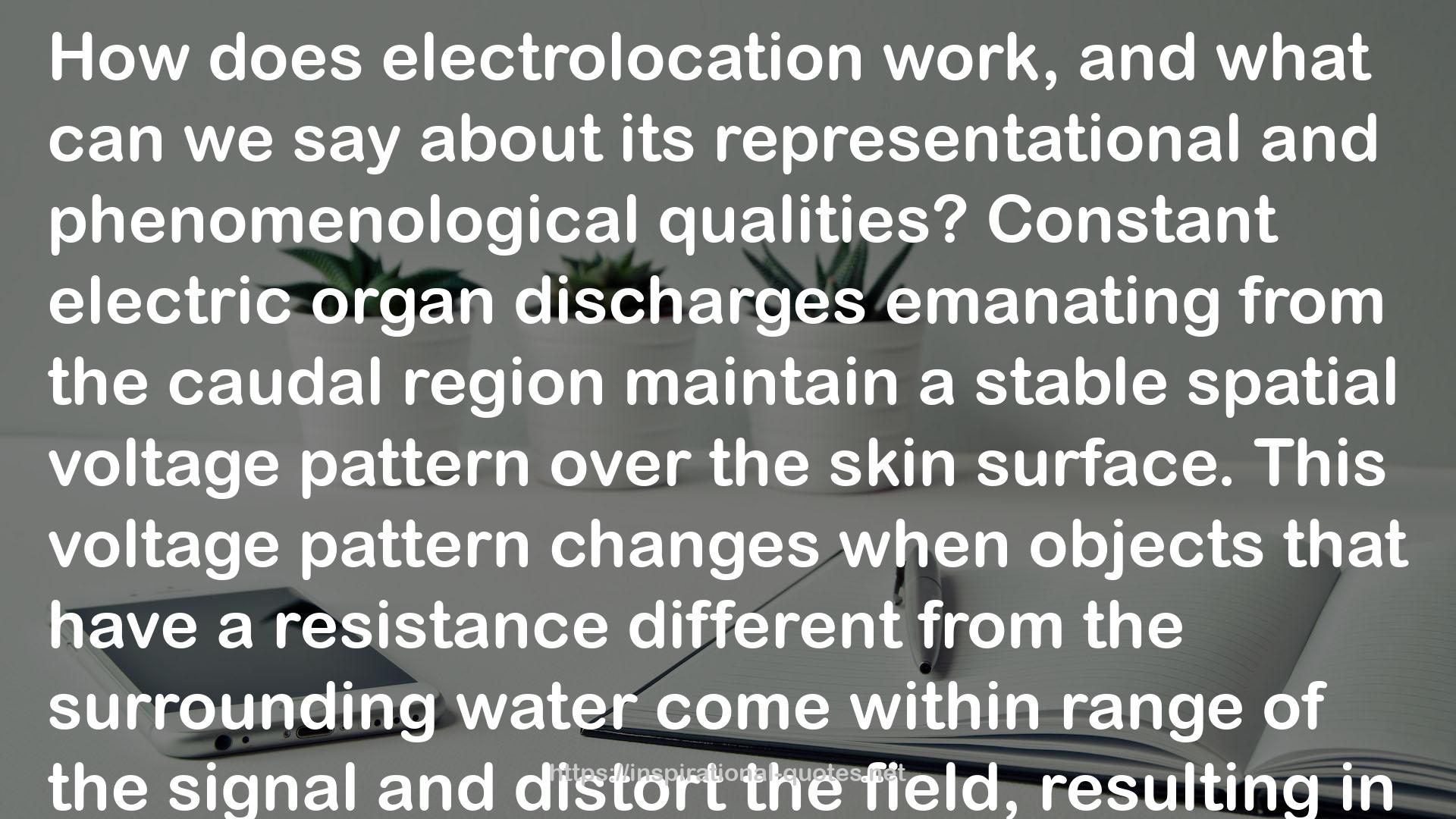" How does electrolocation work, and what can we say about its representational and phenomenological qualities? Constant electric organ discharges emanating from the caudal region maintain a stable spatial voltage pattern over the skin surface. This voltage pattern changes when objects that have a resistance different from the surrounding water come within range of the signal and distort the field, resulting in changes of local electric voltages at particular skin loci. Objects can alter the stable electric discharge field in waveform and/or in amplitude, and weakly electric fish can detect both types of disruptions. These changes in local transepidermal electric current flow are recorded by the skin electroreceptors, which act as a 'retina' upon which an electric image of the object is projected. This image is then transduced, and the information is fed to regions of the brain that process higher-order features of objects. Whereas in humans the processing of higher-order features of objects take place in the cerebral cortex, in electrolocating fish these cognitive tasks are carried out in their hypertrophied cerebellum. The 'mormyrocerebellum' is so oversized that it accounts for the vast majority of the organism's total oxygen consumption, with metabolic expenditures exceeding that of any vertebrate. This, in turn, speaks to the great functional utility of electrolocation: all that brain stuff must be doing something computationally demanding and ecologically important. "
― , Contingency and Convergence: Toward a Cosmic Biology of Body and Mind
